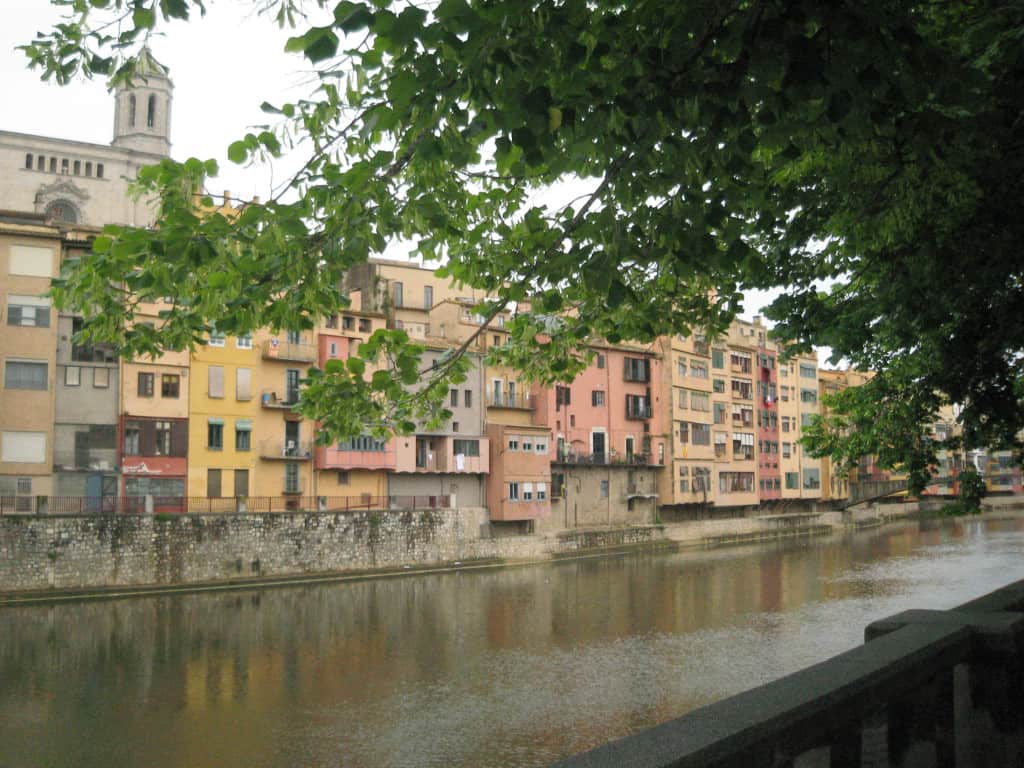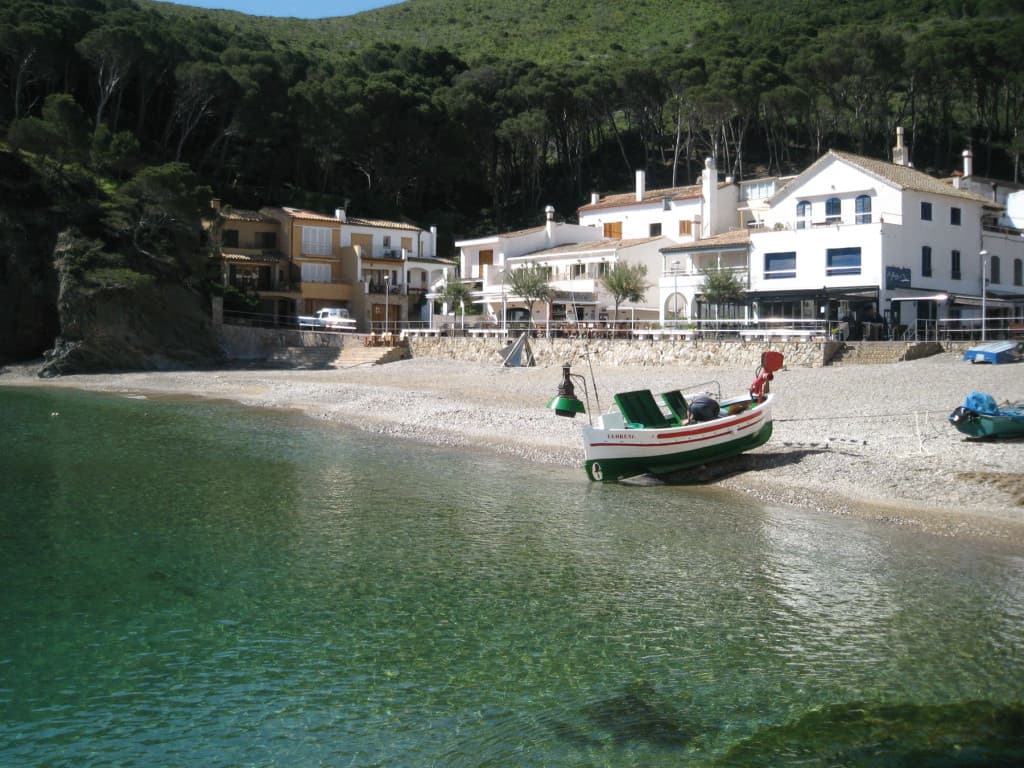On a whistle stop tour of the Costa Brava, Niamh Mac Sweeney discovers rough and rugged Catalan coastline, sensational gastronomy and a vista of fiestas and festivals.
I am one of those constant Spanish tourists, having holidayed in Spain more times than I can count. It’s always a firm favourite on my list of destinations when it comes to either short city breaks, long lounging holidays, or activity filled adventures. It’s easy to understand why more than 1.2 million Irish people visited Spain this year; ease of access, choice of destinations and the variety of holiday types are all compelling reasons for visitors. Equally, it is steeped in history and culture and the Spanish, much like the Irish, are welcoming, friendly and fun.
Spain is a diverse and exhilarating mixture of many things. It could be considered an unsung hero in many ways especially as it more commonly takes the title as a choice destination for package holidays. But Spain is so much more than two weeks in the sun.
On any visit to La Furia Roja, I am eager to explore new places and given the size, depth and variety Spain has to offer, looking for something ‘different’ is never a problem in this culturally rich and stunning land.
Having never been north of Barcelona, the Costa Brava seemed like an ideal destination for a relaxing three-day break. Its wild and rugged landscape stretches 60km north of Barcelona towards the Pyrenees on the French border, where you can ski and snowboard all year round, where mountain ranges, valleys and coastline blend together in a dramatic display of picturesque scenery.
Costa Brava is the name given to the coast of Girona, the north-eastern Catalonian province on the Iberian Peninsula. It’s not surprising that the Costa Brava has been voted National Geographic Best of the World 2012 as a top travel destination. From the first Neolithic setters to the surrealist legend, Salvador Dali, the Costa Brava is as rich in heritage as it is in nature and landscape.
Girona

The city of Girona.
The city of Girona can trace its origins back more than 2,000 years through two fortified enclosures, the Força Vella and the Medieval Quarter. The Força Vella dates back to Roman times while the medieval extension of the city walls was carried out during the 14th and 15th centuries. The city’s artistic heritage has been impressively preserved and the old Jewish Quarter with its winding streets, columned squares and exuberant baroque architecture, makes this city ooze plenty of appeal and charm. The fact that Girona airport is less than a half an hour’s drive from the marvellous old town is an added bonus.
The Girona region is one of the most varied provinces of Spain. It has the stunning coastal areas with sandy beaches and secluded rocky coves, but it also has plenty of historical and cultural trails. Staying at the AC Hotel Palau de Bellavista, which is located in a quaint residential area in Girona known as Les Pedreres, this urban and modern hotel has superb views of the city and yet is still only a few minutes’ walk from landmarks such as the city’s cathedral, The Jewish History Museum and the Arab Baths.
While we were in Girona, the ‘Temps de Flors’ (flower season) was on. This flower show is held every year and locals and businesses get fully involved in filling urban, public and monumental spaces with lush artistic floral displays.
Award winning gastronomy
After walking around the city, dinner in Divinum was – how shall I put this? – divine. A firm favourite with locals, creative Catalan cuisine is served with a range of local wines, in spectacular surroundings. What’s not to love?
Girona is home to some of the finest restaurants serving top quality cuisine using locally sourced produce in an innovative and avant-garde way. As if further proof was needed in the eating of the pudding, El Celler de Can Roca in Girona is officially the ‘Best Restaurant in the World’ having been awarded the illustrious accolade by Restaurant magazine this year.
Salvador Dalí
The garden at the Gala Dalí Castle in Púbol.
After a night of being well feed and watered, the following day we depart for Púbol to visit Castillo Gala- Dalí. The Gala Dalí Castle in Púbol has been open to the public since 1996, and allows visitors discover this medieval masterpiece in which Salvador Dalí fulfilled his promise to make a mausoleum for his muse and wife, Gala, thus making her ‘queen of the castle’. After Gala’s death the castle became Salvador Dalí’s last workshop.
From Púbol we take a short costal drive to Peratallada. Whether a walking route through the Camino de Ronda, from Calella del Palafruguel to Llafranc or a bike ride between Peratallada and Pals, the landscape and terrain in any direction doesn’t disappoint. Jagged cliffs, rugged and rocky headlands jutting out into the sea… this is where mountains, forests and sand coves make up a giddy and captivating scene.
Begur
After tapas in Llafranc, it was on to Begur. A charming and unspoilt medieval village, Begur is full of old world charm. Stylish and very ‘Spanish’, Begur is situated on a rocky coastline with quaint boutique hotels and restaurants dotted around. Overlooking secluded coves and beaches, this hidden gem has lots of character and charisma.
Surrounded by coves, rocks and pines, the Hotel Atigua Blava juts out into Aiguablava Bay and is a relaxing retreat after a heady day of walking and hiking along the hills and coves. Aigua Blava is a family business founded some 75 years ago and it has managed to retain its homeliness and heritage. Today, the hotel is managed by the third and fourth generations of the very same family.
The restaurant in the hotel is outstanding and boasts spectacular panoramic views of Aigua Blava Bay. A fusion of traditional and contemporary Catalan cuisine crescendo in an endless selection of taste sensations as plates and plates of delicious food is presented to us. Fresh and locally sourced and produced food fills the menu as does a great selection of wines and Cava from the vineyards of the Empordà region. Breakfast the next morning on the terrace is delightful but then it seems that no matter where we are in this hotel the views, food and service are always spectacular.
Sadly short breaks are predictably short. But still, there’s a lot you can pack into 72 hours on the Costa Brava. From an archaeological point of view the region is fascinating with many examples of Greek ruins, Roman villas, medieval towns and Romanesque and Gothic churches. From a cultural and arts perspective, Girona and surrounding areas have plenty to keep you amused and entertained, and if sampling award-winning food and wine is your thing, then you will be spoilt for choice amid the top quality hotels and restaurants in this north-eastern Catalonian province. Chic and sophisticated, yet still full of character and charm, my trip to the Costa Brava was indeed short but it was also immensely sweet. A real treat for all the senses, I vowed to return to explore once more this diverse and captivating region. Whether it’s teeing off on the golf course, relaxing on the beach, eating fresh fish in a quaint fishing village or for the more adventurous, trekking in the Pyrenees, the Costa Brava is less package holiday and instead bravely boasts to being the full package and much more.
Out and about
Getting there is easy. Ryanair operate daily flights to and from Girona. To book flights and for more details, log on to www.ryanair.com.
Getting around:
Girona airport is about a half an hour drive from the city. Hire a car and you could be on the beach in under an hour.
Staying there:
The AC Hotel Palau de Bellavista in Girona is an urban and stylish city enclave. The Hotel Atigua Blava in Begur is a coastal hideaway retreat.
Eating out:
There are many delightful tapas and fine dinning restaurants across the Costa Brava. Divinum in Girona hit a high note, as did the restaurant in the Atigua Blava hotel in Begur.
Ask the expert:
Although it is easy to follow the costal walks yourself, a tour guide always has insider knowledge and interesting facts to share. Check out the tourist Information office on www.costabrava.org for a list of guides and tours.
Don’t miss:
The Costa Brava seems to have a constant stream of festivals throughout the year. For a list of festivals taking place, log on to www.girona.cat/turisme.

